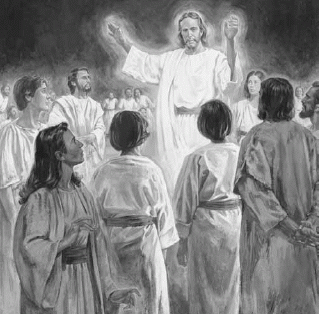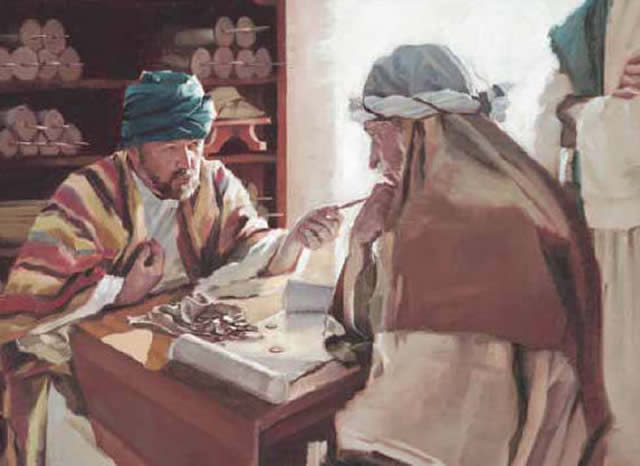Question
Gramps,
Is Cain still alive?
Lon & Mel
Answer
Lon & Mel,
The story of Cain is one of the most profound in the scriptures, serving as a cautionary tale about the consequences of sin and rebellion against God. As the firstborn son of Adam and Eve, Cain’s actions set a precedent for humanity, illustrating themes of jealousy, violence, and spiritual separation.
The narrative of Cain and Abel, found in the book of Genesis, introduces Cain as a figure whose jealousy leads him to commit the first murder by killing his brother Abel. This pivotal moment not only marks a significant event in biblical history but also raises questions about Cain’s existence and state after death. According to Latter-day Saint doctrine, Cain’s fate is not one of redemption but rather of eternal separation from God. This understanding stems from a combination of scriptural text and modern revelation, which together provide a comprehensive view of who Cain is and what he represents.
Cain is introduced in Genesis 4:1-16 as the son of Adam and Eve, and his actions are pivotal to understanding his fate. The first act of violence recorded in scripture occurs when Cain, driven by jealousy over God’s acceptance of Abel’s offering, murders his brother. This act of rebellion against God not only signifies Cain’s moral failure but also sets him on a path of spiritual decline. According to the Bible Dictionary entry on Cain, his actions had profound consequences for humanity, marking him as a significant figure whose legacy is one of curse and despair.
Furthermore, the Book of Moses expands upon Cain’s story, providing a deeper insight into his relationship with God. It explains that Cain made a covenant with Satan, thus sealing his fate as “Master Mahan,” a title that denotes his complete rejection of God (Moses 5:29-31). This act of defiance not only demonstrates Cain’s moral decay but also introduces the concept of perdition, which is crucial to understanding his eternal state.
After the murder of Abel, Cain is confronted by God and receives a curse that profoundly impacts his life. In Moses 5:37, it is revealed that he would be a “fugitive and a vagabond,” destined to wander the earth without peace or stability. This curse signifies more than just a physical punishment; it embodies a spiritual exile from God’s presence. According to Latter-day Saint doctrine, the implications of this curse extend beyond Cain’s earthly life, suggesting that his rebellion has led to an eternal state of separation from God.
Elder Bruce R. McConkie, in his seminal work “Mormon Doctrine,” elaborates on this idea, stating that Cain, alongside Satan, is classified as “Perdition”—a term used to describe individuals who have irrevocably turned away from God and are without hope of redemption (Moses 5:24). This classification underscores the severity of Cain’s actions and the enduring consequences that follow.
The teachings of The Church of Jesus Christ of Latter-day Saints offer further clarity on the eternal fate of Cain. In the Doctrine and Covenants, it is explained that those who commit severe sins without repentance, such as Cain, fall into a state of spiritual death. They are classified as “sons of perdition,” meaning they will not inherit any kingdom of glory (Doctrine & Covenants 76:30-38). This doctrine emphasizes the gravity of Cain’s choices and the ultimate consequence of eternal separation from God.
Moreover, scriptural references indicate that Cain’s descendants carried on his legacy, reinforcing the idea that his influence persisted long after his earthly existence. The Old Testament Student Manual highlights that Cain’s actions and his lineage continued to have significant implications for the world. This perspective not only reflects the historical narrative but also serves as a reminder of the far-reaching effects of one’s choices.
In contemporary teachings, the Church emphasizes the importance of agency and the consequences of choices. Cain’s decision to rebel against God serves as a powerful lesson about the nature of sin and its repercussions. The teachings of the Church assert that while individuals have the agency to choose their paths, the consequences of those choices can lead to spiritual death and separation from divine presence. Cain’s story exemplifies this principle, highlighting the seriousness of turning away from God.
In Latter-day Saint doctrine, Cain’s story is often discussed in the context of repentance and the eternal consequences of one’s choices. While the Church does not have a definitive doctrine stating that Cain is still physically present on the earth today, the narrative serves as a vital cautionary tale about the dangers of sin.
1. Cain’s Curse and Consequences: The teachings of The Church of Jesus Christ of Latter-day Saints emphasize the importance of understanding the implications of Cain’s actions. According to the Encyclopedia of Mormonism, “Cain’s punishment was to be a fugitive and a vagabond upon the earth” (Encyclopedia of Mormonism, Vol.1). This highlights the seriousness of his actions and the theological implications of his existence post-murder. His narrative is a reminder of the potential for spiritual separation from God due to sin.
2. The Nature of Sin and Repentance: The Church teaches that everyone, including Cain, will ultimately face judgment and the opportunity for repentance in the afterlife. Elder Bruce R. McConkie, in his book “Mormon Doctrine,” discusses Cain’s fate, stating that he “became a servant of Satan” and was ultimately cast out from the presence of the Lord. This reflects the belief that Cain’s actions led to a profound spiritual consequence that affected his standing with God.
3. Modern Interpretations and Speculations: Within the Latter-day Saint community, there are varying opinions regarding Cain’s current status. Some members and scholars speculate about whether he could still be alive, but these interpretations are not universally accepted and do not reflect official Church doctrine. The focus remains on the principles of repentance and the hope for redemption rather than on the specifics of Cain’s existence today.
4. Official Church Resources: While direct references to Cain’s current existence may be sparse in official Church documents, discussions about sin, redemption, and accountability can often be found in Church publications. For example, the Church’s official website provides insights into the nature of sin and the possibility of repentance, emphasizing that “the Lord cursed Cain, and he should wander the earth”. This reinforces the Church’s stance that Cain’s legacy is one of caution, encouraging members to avoid the pitfalls of sin.
Gramps







